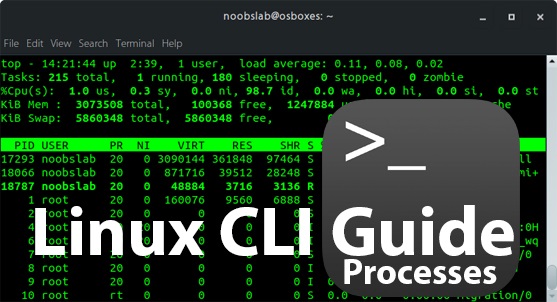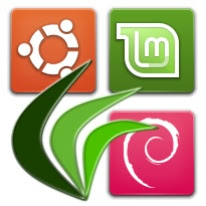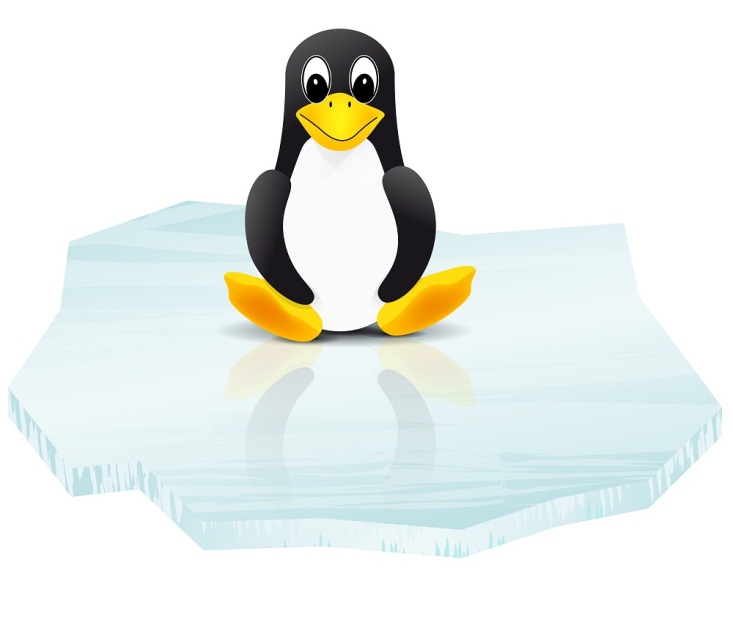

If you are a beginner in Python programming or undergoing Python Course then you want to run some program which requires latest Python version then you are on the right page, we will show you how you can install latest Python version on your Linux(Debian/Ubuntu/Linux Mint/other distributions), currently Python reached at 3.7.x version. Making other Python version default in Linux can make Python applications and desktop components unusable which use certain version of Python. It is better not to set any Python as default in Linux (PS: You can set as default, if you know how to fix if something goes wrong). It is easy to revert back any Python version. Lets start...

Python 3.7.x
We are going to show you two ways to install Python 3.7.x, the PPA method is for Ubuntu/Linux Mint/and Ubuntu dervatives. The second method is universal that means you can install Python 3.7.x on any Linux distribution (Fedora, CentOS, RedHat, openSUSE, Manjaro, ArchLinux etc.)Install Python 3.7.x using PPA in Ubuntu/Linux Mint
PPA is fairly simple way to install Python:Available for Ubuntu 18.04 Bionic/16.04 Xenial/14.04 Trusty/Linux Mint 19/18/17/and other related Ubuntu derivatives
To install Python 3.7.x in Ubuntu/Linux Mint open Terminal (Press Ctrl+Alt+T) and copy the following commands in the Terminal:
Terminal Commands: |
|---|
sudo add-apt-repository ppa:deadsnakes/ppa |
sudo apt-get update |
sudo apt-get install python3.7 |
If you want to install Python 3.6 then use this command(Ubuntu 16.04/14.04/Linux Mint 18/17):
Terminal Commands: |
|---|
sudo apt-get install python3.6 |
For Python 3.5 use this command (Ubuntu 18.04/14.04/Linux Mint 19/17):
Terminal Commands: |
|---|
sudo apt-get install python3.5 |
For Python 3.4 use this command (Ubuntu 18.04/16.04/Linux Mint 19/18):
Terminal Commands: |
|---|
sudo apt-get install python3.4 |
For Python 3.3 use this command (Ubuntu 18.04/16.04/14.04/Linux Mint 19/18/17):
Terminal Commands: |
|---|
sudo apt-get install python3.3 |
Install Python 3.7.x using source
Using this method you can install Python 3.7.1 in any Linux distribution (Debian, Fedora, CentOS, Manjaro, ArchLinux, openSUSE, Ubuntu etc.)Terminal Commands: |
|---|
wget https://www.python.org/ftp/python/3.7.1/Python-3.7.1.tgz |
tar -xvf Python-3.7.1.tgz |
cd Python-3.7.1 |
sudo ./configure --enable-optimizations |
sudo make -j8 |
sudo make install |
That's it





Features Highlight:
- Designed for pressure sensitive graphics tablets
- Simple and minimalistic user interface
- Extensive brush creation and configuration options
- Unlimited canvas (you never have to re-size)
- Basic layer support



What Can Linux Provide For Me?
Linux has quite a few things in its favor. First of all, there are free variations of lots of circulations of Linux to be found. Envision how that would impact an organization: no licensing charges for the operating system they utilize. At the time of this writing, one copy of Windows 10 Pro costs around $200 USD. If there are 10 users at an organization, that is $2,000 USD only to have an operating system on each computer system. That does not include software you may utilize such as accounting software application, CRM/SFA software, anti-virus software, an office suite or anything else with licensing. Money is challenging to come by for the majority of us and this is one practical way to save a few of that valuable resource. Switching to Linux as an outcome of only what has actually been discussed up until now, however, would be a decision made prematurely. Later in this post, possible predicaments and their possible resolutions are gone over.
Another thing Linux has in its favor is security. Some professionals argue that Linux doesn't always require an anti-virus in order to be protected. Please note, however, not everybody agrees with that statement. There are complimentary anti-virus programs for Linux such as ClamAV which provide a suitable level of security, as well as firewall programs (lots of distributions even have an excellent one built-in) to include further defense. "What makes Linux more safe than Windows?" you might be asking. The most relevant reason is quite easy. When virus developers create a brand-new infection, it is generally created to have the biggest wide-spread impact possible. Windows, being the most typically utilized operating system, is the most susceptible from this viewpoint. As Linux has a different file structure than Windows, a virus that was created to work on a Windows device would have no impact on a Linux device. While Linux infections do exist, they are far less typical than Windows viruses.
Last but not least, Linux has a huge selection of complimentary software application compatible with it. The light and dark of this will be gone over more extensive in the next area, but a basic look for free Linux software application can yield a large quantity of results. From CRM/SFA/PM suites and workplace suites to web internet browsers and desktop customization software, there is likely a complimentary program out there to do exactly what you want to do while further cutting costs. The reason this is possible is since a lot of Linux circulations are entirely open source. This implies that individuals can freely modify, broaden or otherwise alter the source code of the operating system without paying royalties or other charges whatsoever. This has actually ended up being a type of neighborhood where developers work on tasks to produce free alternatives to commercially readily available products which can be tailored as required on a per-instance basis by anybody with the knowledge to do so. This works in the favor of many SOHO-type companies along with larger services, as it is yet another method to cut overhead.
I Heard Linux Isn't Really Compatible With A Lot Of Software
While this is over-generalized, there is some level of truth to this declaration. This goes back to Microsoft being both exclusive and on top sounded of software creators and distributors. A really healthy percentage of software written today is designed to be used with a Microsoft OS, because that is exactly what the biggest part of the software supplier's possible client base utilizes. That is simply a case of basic supply and demand. As pointed out previously in this post, Linux is not widely considered for workstations at this time. Because of that, numerous software business does not see it in their finest financial interest to invest the time and resources to make their software application suitable with Linux. This is a basic case of reducing return, which is entirely understandable from a monetary standpoint. For this factor, much of the most popular software is, indeed, not available for Linux. However, as mentioned before, there are numerous complimentary options to this software which often work just as well as the industrial software application. There is an extremely excellent website with open source options to commercial items listed, called OSAlt (brief for open source alternatives). For example, rather of Microsoft's Dynamics CRM (which can easily run an organization into a couple of a thousand USD in licensing fees), vTiger CRM is complimentary and readily available for use. Instead of Microsoft Office, which at the time of this writing is approximately $400 USD per license(office use), Open Office & Libre Office suites are free and an extremely suitable option for the majority of requirements. Searching the internet can show some interested specific lots of options with the ability to fill most of gaps left by the lack of business accessibility of software for Linux systems.
Another thing to be taken into account (and not to be ignored) is that a lot of computer professionals are not particularly familiar with fixing a Linux system. There are definitely lots of out there who are, but not each of them has a suitable understanding to deal with a workplace released on Linux. For that reason, business people need to be conscious to ask a potential IT expert exactly what their familiarity is with Linux.
In the Real World, What Can I Anticipate from Linux? Honestly.
In this short article, the essential advantages and downsides have actually been analyzed. There are, naturally, advantages which were not discussed along with drawbacks that were not pointed out. This post was intended more to the general concerns experienced by the majority of services. Don't take this as a 100% total review of how your company infrastructure would work under these circumstances, due to the fact that service requirements do vary. In basic, an organization picking to move its structure to a Linux environment, whether it is just a server, only the workstations, or some combination thereof, the following declarations ought to accurately reflect most of sensible expectations that company must have.
Linux offers an included level of security from viruses and destructive attacks. As discussed, some functions are either built-in to the operating system itself or into the very nature of the Linux kernel. Some versions of Linux are totally free, as are numerous software application which can be installed within Linux. Therefore, if a service opts to go this route can expect to possibly conserve rather a bit of cash over the licensing fees of other commercial software. Some Linux circulations are commercial and need licensing charges (and in lots of cases, deserve the cash a service would spend for them). Systems like Red Hat have a great deal of regard in their industry and while these distributions are not complimentary, extra security and usability is added to these systems. Another thing a company changing to Linux can anticipate is having a slightly harder time discovering an individual or company to offer technical assistance for their Linux systems. In bigger cities, this might not be much of an issue, however in smaller sized towns, it could take a while.
Armed with these truths, a business supervisor or owner should be able to get a basic concept of whether a Linux server or network might benefit their service. If the ideas presented in this post interest or intrigue you, it may be worth your time to look further into deploying Linux for your service. Many valuable resources are offered around the internet.


The moment you learn a command in Linux on one distribution (version), it means you've learnt that same command for ALL Linux distributions! The commands we're talking about here are the very popular GNU / Linux commands that are common to every distribution, including: Red Hat, Fedora, Ubuntu, Kubuntu, Edubuntu, Slackware, Debian and openSUSE. These are the essential commands required for Linux System Administration, like the cd, ls, cp, rm, pwd and mkdir commands.
3 Reasons for Learning How to Use Linux Commands in Multiple Distributions
It is very important to learn Linux commands in multiple (all if possible) versions because of the following reasons:
- Your Company May Change to a Different Linux Distribution
Even though the basic commands as the ones listed above perform the same function throughout all the different Linux versions, the distributions keep changing constantly and one needs to be acquainted with the other deeper commands. If you work in a company that is currently using just one distribution, the company may change to a different one.
By learning these commands, you are learning how to use Linux in all distros at once! Except for a very few differences in the way that a very few commands work, the GNU / Linux commands are virtually identical from one distribution to another. - You May Start Working at a Company that is Using Multiple Linux Distributions
If you change jobs, you may be working at a company that uses multiple Linux versions. For example, a company may use one distribution for one purpose, such as a web server, and use a different one for another purpose, such as a firewall. When you get training that focuses on commands, you learn to work with all Linux distributions, regardless of what the version is being used for. - You Don't Know What Linux Distribution You'll Be Using When You Get Hired After School
If you are currently getting Linux training at a college, university or technical school, you don't know what version you'll be using when you finish. So why not focus on learning commands and then you will be able to use any distro?
How can you get Linux training to learn commands in multiple distributions?
Easy! Just get some excellent Linux training videos that are presented by an experienced Instructor, and show you how to use commands in several popular distributions. It’s usually rare, but available.


You can use Temporary email to download these ebooks.
Over 70 recipes to help you master Kali Linux for effective penetration security testing.

What you will learn from this book:
- Install and setup Kali Linux on multiple platforms
- Customize Kali Linux to your individual needs
- Locate vulnerabilities with Nessus and OpenVAS
- Exploit vulnerabilities you've found with Metasploit
- Learn multiple solutions to escalate privileges on a compromised machine
- Understand how to use Kali Linux in all phases of a penetration test
- Crack WEP/WPA/WPA2 encryption
- Simulate an actual penetration test using Kali Linux
Linux Command Cheat Sheet

Regular Expression Cheatsheet

If you work with text, you’ll appreciate how useful regular expressions are.
Regular expressions are everywhere in Linux for searching through text right down to the character. This article aims to provide a small "cheat sheet" for people who simply need a little refresher from time to time.
Offered Free by: Make Tech Easier
Checkout some other ebooks list.






Is there anything else you can add? Let us all know what you have to say!





Why is Linux better than any other OS?
Affordability:
Stability:
Preference:
Matters of Hardware:
User-friendly jobs and installation processes:
Security:
Liberty:
Linux Hosts:
All these points are told from a personal tone. You will differentiate if you make use of these two systems consecutively.



You don’t have to pay anything to use Linux
Linux can be adjusted and personalized easily
Security
Linux comes with superior visual effects
A variety of versions
Linux Mobile OS
Indeed we missed a lot of things, and we left it on you. You can tell us what's in your mind.






Before we get into specifics, it is important to remember that there is no such thing as a 100% hacker-proof operating system. This is why, even if you opt for a Linux OS over a Mac or Windows OS, having OS-specific internet security software installed on your computer is important. This software, especially when paired with a Linux OS, drastically reduces your chances that even the most sophisticated hackers will be able to thwart your OS installation.
1. Account Privileges
In Windows users get the authentication to access everything on the system as, by default, they are given administrator privileges. If the viruses make their way to the system, they can quickly gain the access to the crucial part of the system. On the other hand, in Linux the users are given lower access and hence virus can only reach to the local files and folders so the system wide damage is saved.2. Knowledgeable Community
Windows and other operating systems are more posed to the social engineering threats as compared to the Linux. Users who are not tech savvy can simply download the virus by merely opening the email attachments. However this is not the case in Linux as the users are much more technically knowledgeable and unlikely to open any suspicious email attachment. They have to give and run the executable permissions so it is less likely that the real damage will occur. Various developers and testers work on the Linux so if any flaw is found that can be immediately caught and treated that is unlikely for the other operating systems.3. IPtables
A higher level of security on the Linux machine is implemented with the help of the IPtables features. The user defined chains of a table and the in-built chains have specific rules that need to be matched with the set of packets. That creates a more secured environment for executing any code or command.4. Environmental Diversity
Linux can work in many environments like Debian, Ubuntu and Gentoo and many more. The various mail clients, shells and packaging systems also make it highly diversified and tough target for any virus. Windows architecture is not so much diversified hence the virus can easily reach the numerous users and their systems and thus can become a catastrophe for any business setting.5. Linux Auditing System
In Linux various file access and system calls can be seen in the log events. So if anyone tries to snoop in the security of the system files then his security breaches can be reviewed by the administrator. The failed login attempts and other security breaches can also be recorded on the disk which can be viewed by the administrator later.6. Lesser Audience
The audience size of the Linux users is much smaller as compared to the Windows and Mac OS. As the number of users are less so the less of the viruses target it in any of the business setup or organization.The question at the end of the day is not which operating system is the best in terms of security. As the Linux is also not impervious to the security issues but here the better management of the operating system’s network makes it superior than the other operating systems. Virus scanners and firewall enabling features also make Linux a better choice for any business setup than the other OS.






1. Familiarize yourself with the keyboard shortcuts
2. Use the pager
3. Use drawers
4. Package manager


Depending on the OS you use, some barcode printers might not work. When you purchase your barcode printer (if you get a printer specifically designed for barcodes, like the one offered by Shopify), you'll have to check to make sure it's compatible with your systems OS and any other hardware and software you use. If you don't perform this check, you just may find yourself with a barcode printer that doesn't work with your system.
TBarCode/X
TBarCode/X is one of the programs that transforms a regular printer into a barcode printer. It doesn't lose the normal capabilities to print, however, so there's no need to worry about making your printer a one-trick pony. According to Tec-It, the TBarCode/X software can be used to create barcodes in these five areas:- Barcode extension for print and spool servers
- Barcode printer server for SAP, R/3, ORACLE, and any other ERP applications you might use.
- Barcode engine for document management requirements and logistics software.
- Barcode printing software for VDA 4902, ODETTE, and AIAG B-10 forms.
- Barcode generator for web and cellular phone applications.
GNU Barcode
GNU Barcode is a piece of software that can be used to directly convert a text string into a barcode. The type of barcode you wish to use is up to you as GNU can support a wide variety of standard code types. According to GNU, the main features of GNU Barcode are:- Available as a library and an executable program depending on your specific needs.
- It supports UPC, EAN, ISBN, CODE 39 and multiple other common encoding standards.
- It has the capability to output both Postscript and Encapsulated Postscripts.
- Has multiple measurement unit inputs including inches, centimeters, and millimeters.
- Has the ability to create a table of barcodes for easy printing onto sticker sheets and other bulk pages.
Zint Barcode Generator
Zint Barcode Generator is a piece of barcode software that was actually in hibernation for quite some time as the developers left to work on other projects. But, according to Source Forge, the program has been resurrected and is in use again. Zint.github states that the Zint Barcode Generator is an encoding library for barcodes that supports over 50 different symbologies. Some of the supported types include Data Matrix, USPS OneCode, UPC/EAN, ITF, QR Codes, Maxicode, Aztec, LOGMARs, and plenty others. The Zint user manual states that Zint is a project designed to provide a cross-platform barcode generation solution that is completely open source. It is a program you could use without much knowledge of coding or Linux, but you probably want to tread carefully if you decide to use it.If you're using some iteration of Linux as your OS, you probably have at least some knowledge of programming and coding. That knowledge can be incredibly useful when using these programs as some of them have very intricate systems and abilities that the average user might not be able to understand. Regardless of your experience and knowledge, it's absolutely imperative that when you plan on using some software for barcode creation that you make sure your hardware is compatible. Paying for licensing fees and then realizing your stuff doesn’t work together is a good way to waste money and breed frustration.


I am not saying everybody out there is not trusted, there are some trusted companies who provide VPN services (Paid) but you must read their TOS (Terms of service) before using them. Also you should know VPN decrease the Internet speed which is quite noticeable.



Battle Of The Operating Systems: Facebook App Performance
Facebook is presently the most influential and the biggest social networking website in the world. In the past, millions of people visit its website to posts pictures, share videos, update their status, play Facebook slot games, and so much more.Because of the technological advancements, users can do the above mentioned tasks without going to the company’s website since they can do them with the use of Facebook Apps.
Apps are self-contained programs that pretty much fulfill the use of particular website. There are a lot of applications available on different platforms but the most talked-about ones are Linux and Windows. Let’s see how they fare with each other.
Facebook Apps On Linux
Facebook Apps on Linux work perfectly fine. Posting pictures, sharing videos, updating status, and playing online games are really fast! There are no lags whatsoever and everything is a breeze! The interface is also easy to use and exploring features is straightforward and time-saving—ideal for those who are always on the go and need to reach out important people through Facebook.Facebook Apps on Linux also contain various buttons on the left for easy access and efficient usage. Plus, it also contains an integrated search bar which is ideal for searching friends, products, places, and webpages, among others.
Facebook Apps On Windows
While Facebook Apps on Windows do a pretty good job with regard to performing the tasks that they are intended to do, users may notice their sluggish response time and slow performance. There are times when even simple tasks such as viewing several status updates can be quite a challenge. Occasionally, uploading videos can be a bit bothersome and frustrating.With regard to their messaging features, Facebook Apps on Windows work perfectly well, especially when it comes to chatting and many users rave about this aspect. Another good thing about the said programs is they support tagging; as such, tagging photos and videos is a “no-sweat” activity.
Hopefully, the bug fixes which were released (but not disclosed) will be made available anytime soon so that “Facebooking” on Windows can be more enjoyable.
Summary
As of the moment, Facebook on Linux is the clear winner with regard to features and performance. Putting this factor into consideration, those who want to enjoy this social networking medium to the fullest should make it a point to utilize the Linux platform. Take note that such straightforward move can make one’s Facebook experience more fun and worthwhile.


Windows operating system has long stolen a march over Linux when it comes to operating PCs, laptops etc. However, in case of server, both physical as well as virtual, Linux seems to have an advantage.
Advantages of Linux VPS hosting over Windows VPS hosting
Linux beats windows in terms of cost
You may need to install a number of software in the VPS in order to host and manage your website. If you opt for windows VPS hosting you are going to need license for each software you install into your VPS. This increases the cost. On the other hand Linux is open source. You do not need licenses to run Linux software. This automatically brings down the cost of your VPS.Avoid viruses

System resources
A VPS shares the physical resources of a server. Over reliance on availability of physical server resources can bring down the performance of VPS. But with Linux operating system you can optimize the applications as well as the VPS itself to use less resource. This lets the VPS work much more independently and effectively.Popular technologies
Linux supports the most popular technologies in the field of website design such as Apache, MySQL, and PHP etc. With the combination of these applications in a Linux environment you will have the flexibility to serve websites from contents in a database such as in the case of wordpress. You can also do URL rewriting to enliven the PHP pages in your website or portal.Database
If your website is linked to database or it needs database support then a Linux VPS will be the best for you. This is because the most widely used and popular database are MySQL and PostgreSQL. These databases are relational in nature and allow for optimization of communication between database and website. This helps the website in sourcing data from database.Web software
Web softwares such as wordpress, drupal, joomla and some others come for free along with linux operating system. Wordpress is one of the most popular blogging platforms today.So Linux VPS hosting has a genuine advantage over Windows VPS hosting, and if you want to take advantage of the most preferred blogging tools, most popular database and do not need to have .NET technologies then the choice is quite clear.



